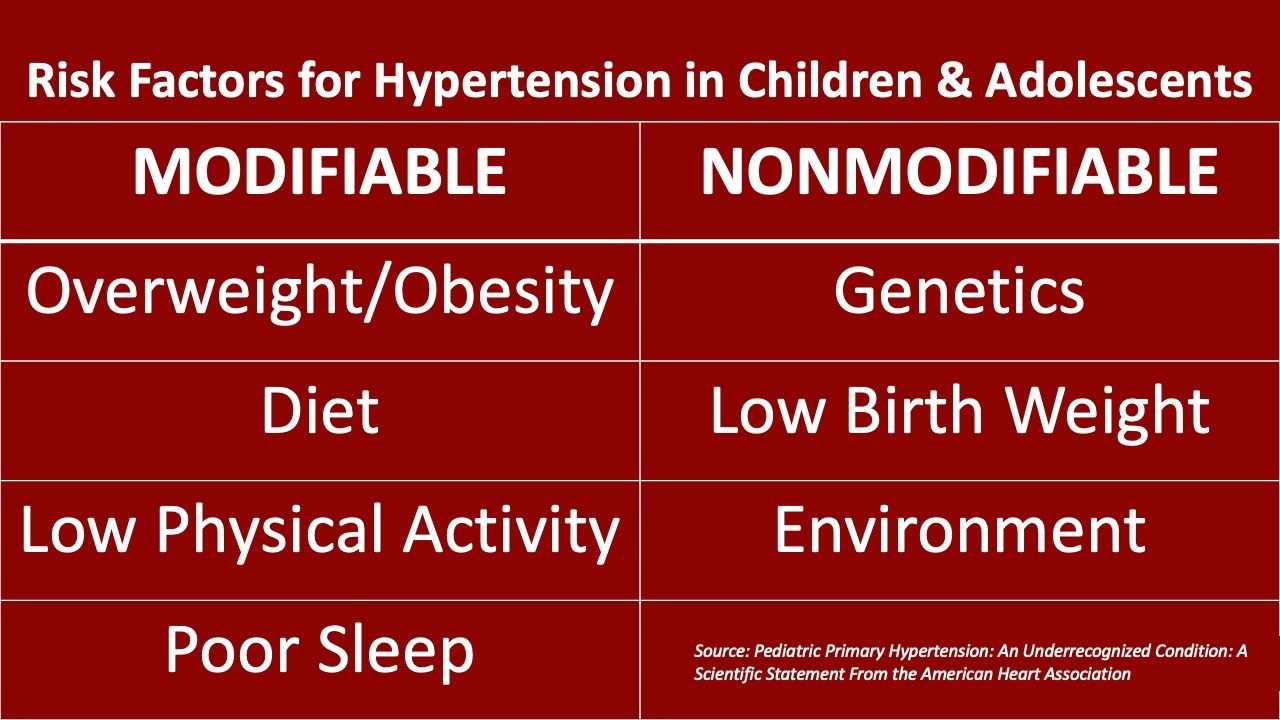AHA Highlights Pediatric Hypertension in Scientific Statement
The latest scientific statement from the American Heart Association takes aim at offering clinicians with a summary of contemporary evidence related to the prevalence and increase in long-term risk associated with hypertension in children and adolescents.
Courtesy: American Heart Association

The American Heart Association (AHA) has released a scientific statement calling attention to the prevalence and long-term impact of hypertension in pediatric patients.
With a prevalence of 2-5% in childhood, the statement provides an overview of contemporary data related to prevalence of hypertension, demographic characteristics, and associations long-term comorbidities in pediatric patients as well as an outline of the most pressing gaps in research.
“Primary hypertension onset in childhood is not a benign condition,” said Bonita Falkner, MD, chair of the scientific statement writing committee and an emeritus professor of medicine and pediatrics at Thomas Jefferson University in Philadelphia. ”This is a health problem that is often amplified by lifestyle and behaviors, many of which are modifiable. Since kids with high blood pressure levels tend to maintain high blood pressure into adulthood, diagnosing and appropriately addressing high blood pressure in youth is imperative to ensure improved lifetime health as early as possible.”
Published on March 30, the statement was composed by Falkner and a team of 8 coauthors on behalf of the AHA’s Council on Hypertension, Council on Lifelong Congenital Heart Disease and Heart Health in the Young, Council on Kidney in Cardiovascular Disease, Council on Lifestyle and Cardiometabolic Health, and Council on Cardiovascular and Stroke Nursing.
Summary of risk factors for hypertension in children and adolescents.

At 11 pages in length and citing 53 references, the statement is broken down into multiple sections and subsections, with sections highlighting key areas of focus, including causes of hypertension in pediatric patients, risk factors for primary hypertension, evidence of heart and vascular injury in pediatric primary hypertension and more.
Among the most pressing needs for research, according to statement authors, is the need for clinical trials on the treatment of primary hypertension in adolescent patents. In their release, the AHA pointed out only a single randomized clinical trial has examined use of antihypertensive medication in children and the study population was only children with chronic kidney disease.
“There is a need for increased understanding and greater research surrounding high blood pressure in youth,” said Falkner. “Future studies to improve both the recognition and diagnosis of high blood pressure in this age group, as well as clinical trials to evaluate medical treatment and recommend public health initiatives, are all vital to improving the increase we are seeing in hypertension in children.“
In their release announcing the statement, the AHA noted scientific statements outline detail contemporary evidence on topics and what areas need additional research, but do not make treatment recommendations.
References
- Falkner B, Gidding SS, Baker-Smith CM, et al. Pediatric Primary Hypertension: An Underrecognized Condition: A Scientific Statement From the American Heart Association [published online ahead of print, 2023 Mar 30]. Hypertension. 2023;10.1161/HYP.0000000000000228. doi:10.1161/HYP.0000000000000228
- American Heart Association. Children with high blood pressure often become adults with high blood pressure. https://newsroom.heart.org/news/children-with-high-blood-pressure-often-become-adults-with-high-blood-pressure. Published March 30, 2023. Accessed March 30, 2023.